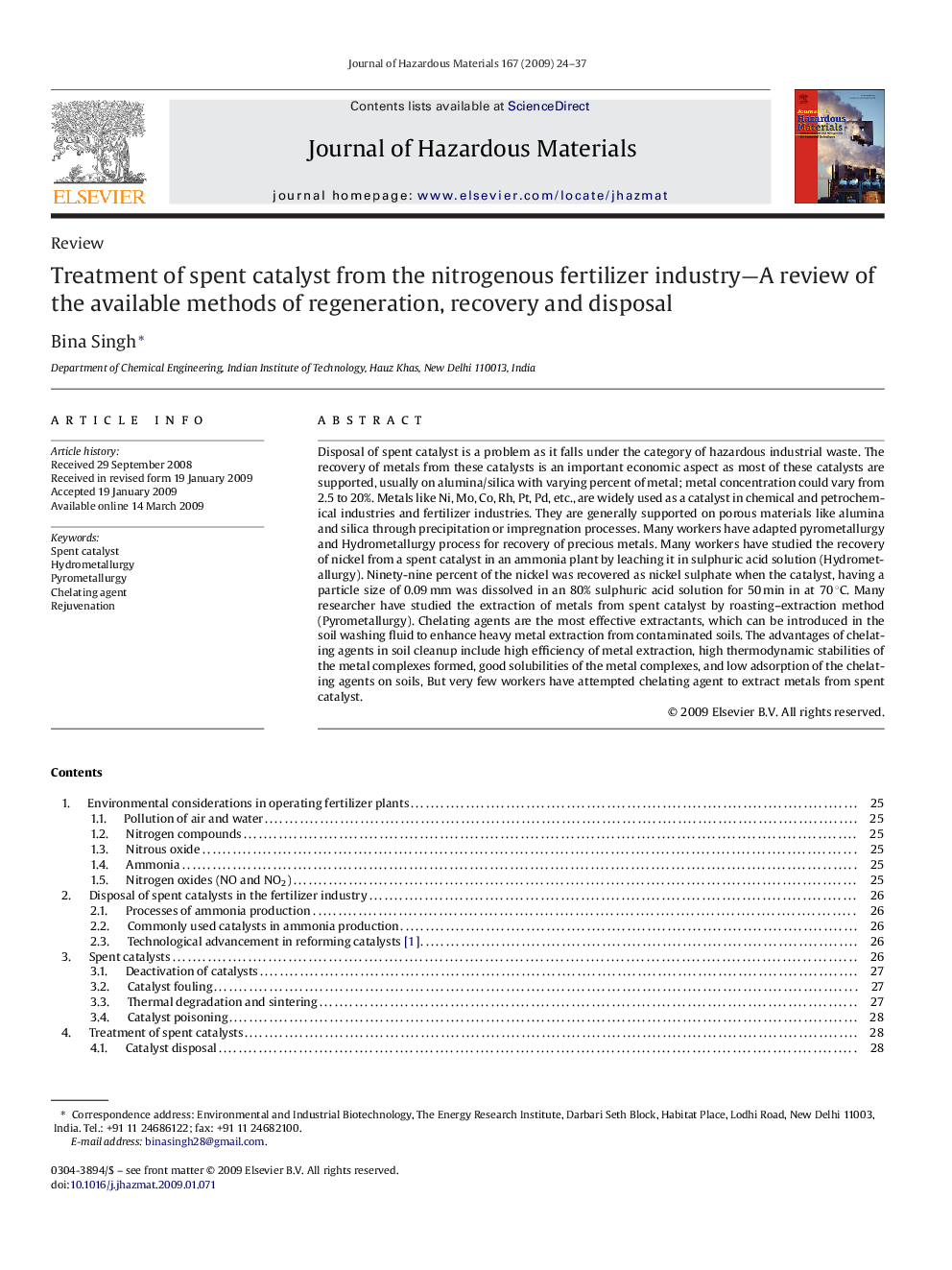| Article ID | Journal | Published Year | Pages | File Type |
|---|---|---|---|---|
| 581743 | Journal of Hazardous Materials | 2009 | 14 Pages |
Abstract
Disposal of spent catalyst is a problem as it falls under the category of hazardous industrial waste. The recovery of metals from these catalysts is an important economic aspect as most of these catalysts are supported, usually on alumina/silica with varying percent of metal; metal concentration could vary from 2.5 to 20%. Metals like Ni, Mo, Co, Rh, Pt, Pd, etc., are widely used as a catalyst in chemical and petrochemical industries and fertilizer industries. They are generally supported on porous materials like alumina and silica through precipitation or impregnation processes. Many workers have adapted pyrometallurgy and Hydrometallurgy process for recovery of precious metals. Many workers have studied the recovery of nickel from a spent catalyst in an ammonia plant by leaching it in sulphuric acid solution (Hydrometallurgy). Ninety-nine percent of the nickel was recovered as nickel sulphate when the catalyst, having a particle size of 0.09 mm was dissolved in an 80% sulphuric acid solution for 50 min in at 70 °C. Many researcher have studied the extraction of metals from spent catalyst by roasting-extraction method (Pyrometallurgy). Chelating agents are the most effective extractants, which can be introduced in the soil washing fluid to enhance heavy metal extraction from contaminated soils. The advantages of chelating agents in soil cleanup include high efficiency of metal extraction, high thermodynamic stabilities of the metal complexes formed, good solubilities of the metal complexes, and low adsorption of the chelating agents on soils, But very few workers have attempted chelating agent to extract metals from spent catalyst.
Related Topics
Physical Sciences and Engineering
Chemical Engineering
Chemical Health and Safety
Authors
Bina Singh,
